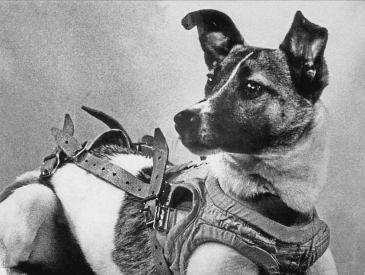When the Soviets launched Sputnik 2 on November 3, 1957, another round of anxious concern swept through American leadership at the Pentagon, White House, and indeed all Americans. It had been less than a month since the Soviets launched Sputnik into space, igniting the space race between the United States and the Soviet Union. In the 1950s, space exploration became possible because the United States military took its spoils of war from Germany in 1945. The Soviet Union also wanted the technology, but it was too late. So when the Soviets began launching rockets into space with dogs as passengers, just 12 years after the end of World War Two, the world, specifically the United States military, took notice.
Laika’s One-Way Flight Into Space
Officials chose a stray they found wandering around Moscow because they believed a homeless dog could handle the cold extremes of space. They named the dog Laika and put her through training for her suicide mission. Yes, this was a one-way trip. Officials wanted to know how long she could live as Sputnik 2 orbited the planet. Her tiny capsule had enough food and water for seven days and an oxygen scrubber that absorbed CO2. Unfortunately, details of Laika’s historic flight didn’t come to light until decades later. Sputnik 2 orbited the earth about 2,500 times before it fell out of space and burned up during reentry in April 1958.
Laika is a forgotten hero of the space race. At a minimum, she would have lived seven days. However, reports indicate she died after completing her fourth orbit, hours into her flight, from exposure to extreme temperature. However, her sacrifice was not for nothing. The data revealed one important thing—if Laika and other small animals can be launched into space and survive, so can a monkey and, eventually, a person. On May 25, 1961, President Kennedy promised the U.S. would put people on the moon by the decade’s end.

